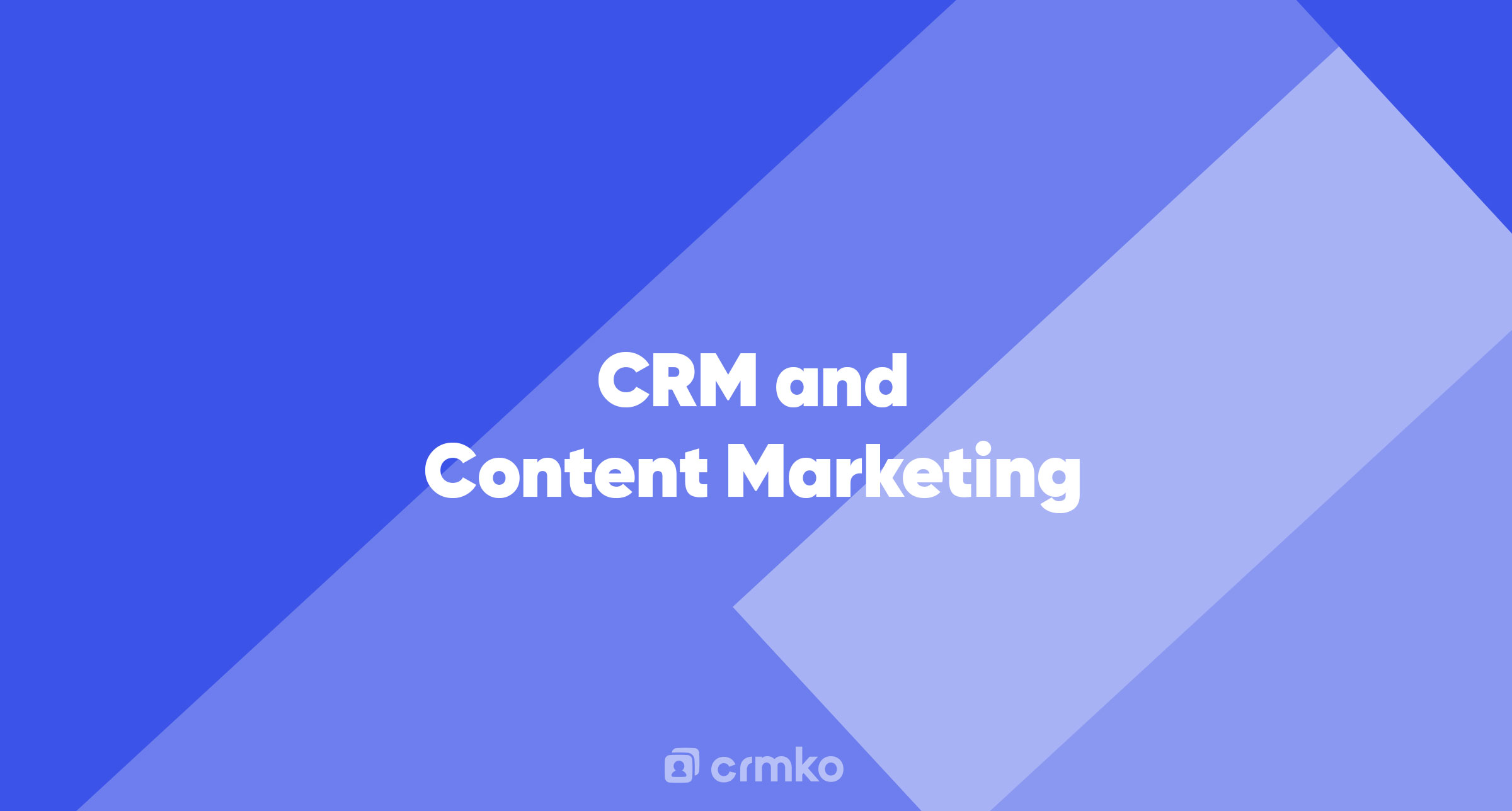How can businesses leverage CRM data to create compelling content that resonates with their target audience? In this comprehensive guide, we explore the intersection of CRM and content marketing, uncovering strategies and techniques to develop relevant and engaging materials that drive customer engagement and boost sales.
Introduction
When it comes to effective marketing, delivering the right message to the right audience at the right time is crucial. This is where Customer Relationship Management (CRM) software comes into play. CRM systems revolutionize how businesses interact with their customers, providing a centralized platform to manage customer data and analyze customer behavior. But CRM can do so much more than just store data - it can be a powerful tool for content marketing.
In this guide, we will dive into the world of CRM and content marketing, exploring how businesses can utilize CRM data to create personalized and impactful content. We will discuss the steps to set up a CRM system for content marketing success and explore three key ways to leverage CRM data for content marketing.
Setting up a CRM System for Content Marketing Success
Not all CRM platforms are created equal. When selecting a CRM system for content marketing, it's important to look for features like data integrations, analytics dashboard, and automation capabilities. Once you have chosen a CRM software, treat it as the central location for all your customer data. This means integrating or inputting data such as contact information, purchase history, and interaction history.
To ensure the accuracy of your CRM data, it's crucial to keep it updated. This involves adding new contacts, tracking changes in existing ones, and automating these processes through data integrations. Setting up automation rules within your CRM system can help streamline contact follow-ups or abandoned cart emails. Finally, thoroughly test your CRM system before going live to avoid any potential data loss or missed opportunities.
Three Ways to Use CRM Data for Content Marketing
1. Create Personalized Content Using CRM Segmentation
One-size-fits-all content is a thing of the past. With CRM segmentation, businesses can tailor their content to specific audience groups based on various criteria. Segmenting by lead source allows you to personalize content based on a client's journey, while segmenting by contact type enables targeted messages for specific groups of people. Additionally, segmenting by lifecycle stage allows you to send relevant messages to individuals at different stages of the buying cycle.
By segmenting your audience, you can ensure that you're delivering the right message to the right people at the right time. This level of personalization enhances customer engagement and increases the effectiveness of your content marketing efforts.
2. Fine-Tune Content Based on CRM Customer Change Data
CRM systems provide valuable insights into customer behavior and preferences. By tracking changes in customer data, businesses can fine-tune their content marketing strategies to align with evolving customer needs. For example, if a certain category of products is selling better than others, you can focus your content strategy on promoting that category to drive sales.
Analyzing CRM customer change data also helps in identifying emerging trends and customer preferences, allowing you to create content that resonates with your audience. By staying up-to-date with customer behavior, you can consistently deliver relevant and engaging content that drives customer engagement and loyalty.
3. Expand Your Audience with Insights from CRM Systems
CRM data not only helps you understand your existing customers but also allows you to identify potential new customers and target new audience segments. By analyzing customer data, you can uncover new opportunities and expand your target audience. For example, if you notice a significant number of potential customers from a demographic that is not your typical target audience, you can create content specifically tailored to appeal to that segment.
Additionally, analyzing customer purchase patterns can help you identify products that are frequently bought together. By creating content that showcases the synergy between these products, you can encourage customers to make additional purchases, increasing revenue and customer satisfaction.
Conclusion
CRM systems and content marketing go hand in hand, enabling businesses to create personalized, relevant, and engaging content that drives customer engagement and boosts sales. By leveraging CRM data, businesses can segment their audience, fine-tune their content strategies, and expand their target audience. The key to success lies in setting up a CRM system for content marketing, utilizing segmentation techniques, and continuously analyzing and optimizing content based on customer data.
In today's competitive landscape, effective content marketing is essential for businesses to connect with their target audience and drive growth. By harnessing the power of CRM data, businesses can create content that resonates with their audience, enhances customer engagement, and ultimately drives business success.
Remember, the key to effective CRM and content marketing is understanding your audience and delivering valuable, relevant content that meets their needs. With the right CRM system, data-driven strategies, and a customer-centric approach, businesses can unlock the full potential of their content marketing efforts.
